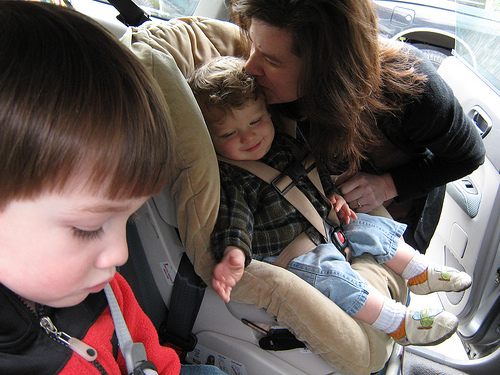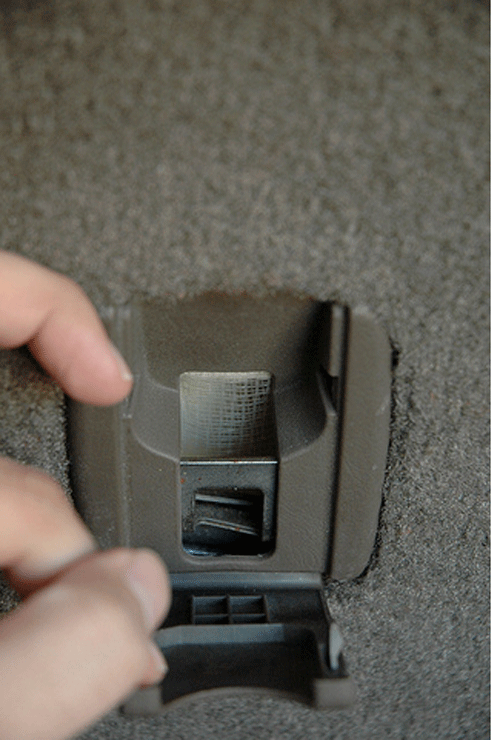
Car seat safety
Today we have a sponsored guest post from Pass Smart who have valuable tips on a very important topic – car seat safety.
Hello my name is Izzy and I blog over at Pass Smart.Many of us treat our family cars as our lifelines. They get us from A to B, make sure we’ve got all of the grocery shopping and help us get the kids to school on time. Being a driver makes many parents’ lives easier, but making sure our little ones are safe whilet on the move is always our highest priority.
This car seat safety guide from PassSmart will share advice on how to choose the right seat, how to fit it to your car and how to make sure you’re using your little one’s car seat properly.

Choosing your car seat
There is more to buying a car seat than popping to the store and choosing one which catches your eye. In fact, you’ll need to choose a seat which fits to your vehicle, is the correct size and model for the age and size of your child, and meets government requirements.
Car seat requirements by age
The age and size of your child dictates what kind of car seat they should travel in. These are the government approved guidelines, by age:
Birth – 12 months
Suitable car seats: Rear-facing infant seats, 3-in-1 seats and convertible seats
If your child is 1 year old or less, they should always sit in a rear facing car seat. An infant-only seat will keep your baby happy in the back, but you won’t be able to continue to use it as they grow. A 3-in-1 or convertible car seat, on the other hand, has more height and is, therefore, able to keep your child in the rear-facing position for longer.
v
1-3 years
Suitable car seats: 3-in-1 seats, convertible seats and front-facing child seat
It’s recommended that you should keep your infant rear-facing for as long as you can, as this is the safest position for them to be in. Do not, however, keep them in a rear-facing seat once they have outgrown it. This works on either weight or height, so whichever limit they reach first will be your indication to buy a new, front-facing car seat. You can find the weight and height restrictions specific to your car seat in the car seat user manual. Typically you can choose to go wit a convertible seat for a younger toddler. Convertible seats can be attached to be either forward facing or rear facing. For older toddler you can opt for toddler seats which are forward facing only.
4-7 years
Suitable car seats: Front-facing car seats, booster seats
At this age, your child will be in a forward-facing car seat. It is advised that you should keep them in their front-facing seat until they outgrow the weight or height restrictions for the car seat. The forward-facing car seat should have a harness to keep your child secure, and they should stay in this until they are tall enough or heavy enough for a booster seat. Booster seats come with or without a back. Refer the below images to see the differences.
8-12 years
Suitable car seats: Booster seats and standard seatbelts
These will be your child’s final years in a car seat. At this age, they should be using a booster seat until they are big enough to wear a seatbelt comfortably on its own. A seatbelt fits properly when the lap belt lies on the upper thighs and the shoulder belt lies across the chest and shoulder, not the neck or face.
All children should remain the in back seat until they are at least 12 years old as this is safest place for them to be.
Installing your car seat
Each car seat will come with its own manual and its own set of instructions, so you should always read this before attempting to install your car seat. The same applies to your vehicle. Every car will come with a different set of instructions for car seat installation, so refer to your manual to make sure you know how to install yours properly.
Car seats can be confusing things and, if you remember the day you brought your new baby home from hospital, you’ll remember how daunting fitting one can be. There are two ways to install a car seat: the LATCH method and by using a seatbelt.
The LATCH method
LATCH stands for Lower Anchors and Tethers for Children, and is a car seat installation system which aims to make fitting your child’s seat easier. The ‘lower anchors’ are small metal bars usually found at the bottom of your vehicle’s back seat. The straps from your child seat will attach to these in order to make sure the seat is secure.
There will also be a ‘tether’ at the top of your child seat and this should be used in all forward-facing car seats, and, as some recommend, can be used in a number of rear-facing seats too.


The LATCH method has been an approved method since 2002, but recent reports suggest that the rules regarding the LATCH method are about to change. As car seats are getting heavier, there are concerns that the latches are no longer strong enough to hold as much weight as they used to. As a result, it’s expected that there will be an amendment to next year’s federal motor-vehicle safety standards, stating that a child can only stay in a LATCH-fitted car seat until they reach 65 pounds in weight.
The seatbelt method
Child seats can also be safely installed using a standard seatbelt. Every vehicle and car seat is different, so refer to both manuals when using the car seat method on your child’s seat.
You will need to make sure the base of the car seat is firmly in the back of your vehicle, before placing the seat belt strap through the belt loop of your rear-facing set. Make sure there are no twists in the seatbelt, then buckle and lock it. To find out how to lock your seatbelt, consult your vehicle manual.
Next, you will need to ensure the base of the car seat is firmly attached to the vehicle and does not move more than one inch in any direction. At this point, you should make sure your car seat is seat in a semi-recline position in order to keep your baby’s airway free. Don’t panic about this, as most infant car seats will have a recline indicator to help you.
Now, secure the harness, making sure the straps aren’t twisted and that they’re placed through the slots at or below your child’s shoulders. Buckle the harness and chest clip, making sure it’s tight and that the clip is at armpit level.
Check ratings
Finally, before buying any car seat, make sure you check the NHTSA ease of use ratings. Any car seat rated by NHTSA meets Federal Safety Standards and rigorous crash performance tests. Always check a car seat’s NHTSA rating before handing any cash over and never buy a second hand car seat unless you can be 100% sure it comes with the correct user manual and meets all up to date requirements.
You can also have your car seat checked for suitability by a certified child passenger safety technician, or at a child car seat inspection station. You can find your local station by searching on the NHTSA site with your zip code.
It’s also worth noting that car safety requirements vary by state. In Florida, for example, your child is only required, by law, to be seated in child or booster seat until the age of 3. In Wyoming and Tennessee, on the other hand, the law requires a child to be in a child or booster seat until at least the age of 8. Check the individual laws by your state, but always refer to government safety guidelines to ensure you make the best decision for your child.

Practicality: Cleaning your car seat
Choosing the correct and safest car seat for your child is the most important thing, but you’ll also want to make sure you choose one which is practical and easy to clean. Seats made with smooth fabric are much easier to wipe clean, while textured seats will invite all the grime, food and dirt to sink into to the fabric.
Use antibacterial wipes to make sure your little one is safe, comfortable and clean in the back while you focus on the road in front.
This article was provided by the team at PassSmart, who strive to keep drivers safe on the street.






